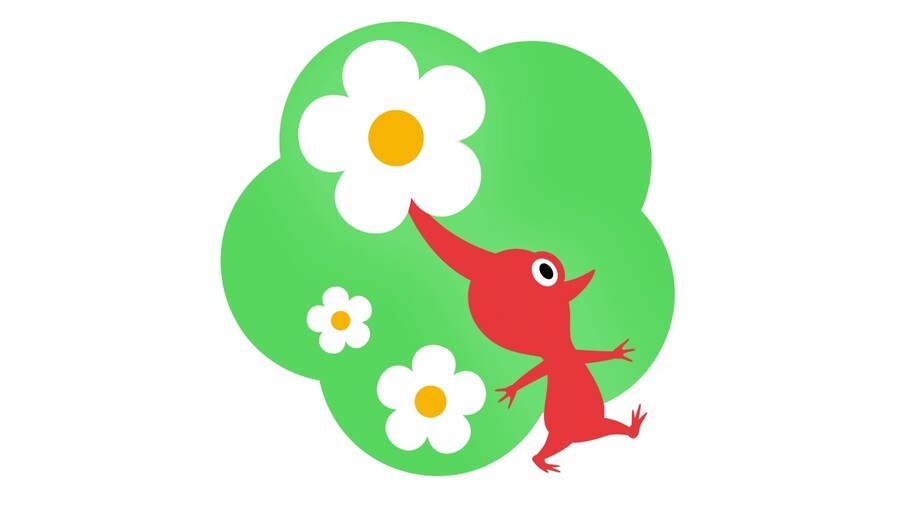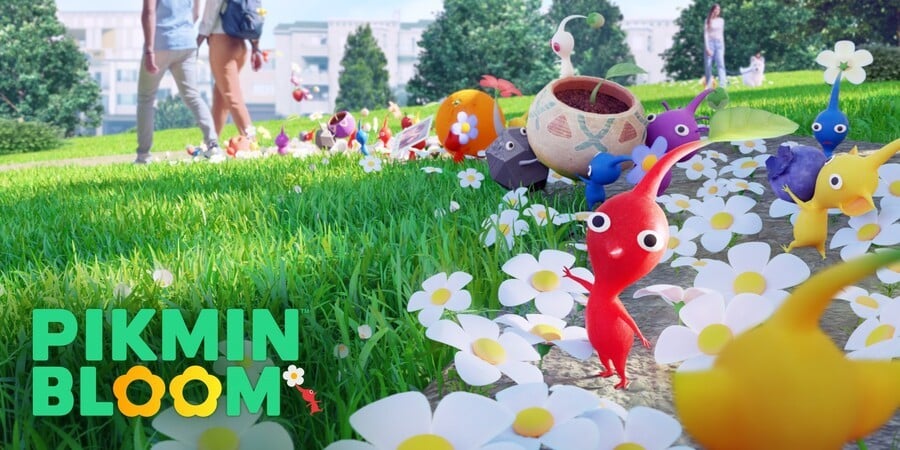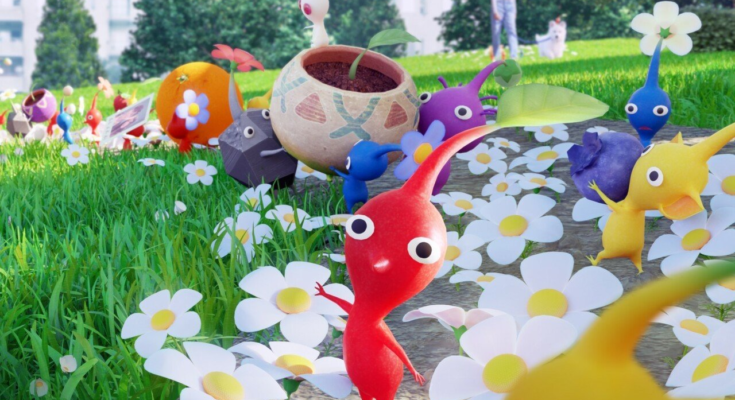If playing golf is the best way to spoil a walk, Niantic’s hope for Pikmin Bloom, the long-awaited follow-up/sister title to the wildly successful Pokémon GO, is to create the exact opposite — something to “spice up your daily walks” and turn an everyday stroll into something flower-filled and joyful. Rolling out across the globe “over the coming days” via a staggered launch beginning today in Australia and Singapore, this was developed by Niantic’s Tokyo Studio in direct collaboration with Nintendo and by design is more lifestyle app than ‘game’.
Where Pokémon GO become an obsession, Pikmin Bloom — according to Niantic CEO John Hanke — is software designed to fit in rather than compete for attention in your daily routine. It has you collecting seeds as you walk, growing Pikmin by placing them in your incubating pedometer backpack before plucking them, naming them (if you wish), and adding them to your little army of hunter-gatherers.
We were invited to a group Zoom meeting with Hanke and Madoka Katayama, UX design lead at Niantic Tokyo Studio, where the pair outlined the ambitions of this new app and the wide audience they hope to attract. The ‘ages 8-80′ chestnut was rolled out when discussing the target demographic, although after spending time with the app in beta form, it’s certainly clear that this is a much broader experience than even something like Pokémon GO. Pikmin Bloom is very much a pleasant walking app that counts your steps and gently promotes the mental and physical benefits of getting off your backside and out of the house without the onus of catching ’em all.
As well as seeds, Pikmin periodically collect fruit as you walk and this is turned into nectar — calling your small squad to attention with the whistle (in AR mode if you like) and feeding them nectar causes the bulb on their head to bloom and produce petals. Petals are used to activate a trail of flowers (with an appropriately uplifting tune) which are left wherever you walk and offer a couple of benefits. Firstly, the longer you plant flowers, the bigger your seed-growing bonus (and, consequently, the faster your Pikmin seeds will grow). Secondly, leaving a trail of flowers around giant plants in your neighborhood — this game’s equivalent of Poké Stops — will cause them to bloom, too. You can do this on your own (if you’re willing to walk in circles for a while) or join in with other bloomers to get the blossom flowing.
Pikmin Bloom is very much a pleasant walking app that gently promotes the mental and physical benefits of getting off your backside and out of the house without the onus of catching ’em all.
While very far from a mobile version of Nintendo’s RTS series, the app is filled with the adorable audio hooks and cute critter moments that first endeared Pikmin to GameCube owners back in 2001. It’s evidently no accident that Pikmin Bloom is soft-launching on the 20th anniversary of the franchise. In fact, you’d be forgiven for thinking that Niantic has had this one banked for months and they’ve just been waiting for the pandemic to subside in order to launch their walking app at a time when players were able to, you know, walk around freely. However, Hanke tells us that although it’s been in active development for a long time, launch wasn’t delayed by COVID-19 — it’s just taken time for this seed to sprout.
The team apparently experimented for a long time with different Nintendo IP to find the best fit. Hanke and Katayama didn’t specify but one can only imagine that Animal Crossing was another series with sufficiently broad appeal. However, we’re told that the most ‘famous’ IP weren’t necessarily a good fit for a game which needed to interact and intersect with the real world, and Pikmin was apparently the natural choice.

On firing up the app you’re asked to create a Mii avatar from a limited palette which is visible to other users should you choose (as is your flower trail, although you can turn off public visibility). The thinking behind these visible elements is to convey “traces and feelings” of other players and encourage collaboration in a shared asynchronous world, although you needn’t partake in either if you’d prefer not to.
Having played a game in its beta form, we haven’t had enough time to explore every facet, and various elements are gated behind a levelling system which unlocks as you complete tasks and log steps. We’re told that you can send your Pikmin on expeditions to retrieve items, but the general flow of the growth-based gameplay will be familiar to anyone who’s hatched an egg in Pokémon GO, although plucking Pikmin from their backpack-y pots is infinitely more satisfying than tapping an egg.
The familiar way your battery drains while you’re out and about is perhaps less welcome, but mileage — and batteries — will vary. If you link the game to your phone’s health and pedometer apps, the steps you take while the app is closed will also count towards your total. Unfortunately, the game is very much tied to your steps, meaning wheelchair users will have to resort to shaking their mobile devices to make those seeds grow.
This diary-style lifelog element turns the experience into something more like a cross between a game and the ‘Memories’ slideshow from your Photos app
The Lifelog is another aspect that differentiates Bloom from GO — a daily summary of not only the steps you’ve taken, but also your mood and memories captured via photos taken from your Camera Roll (should you grant access). This diary-style element turns the experience into something more like a cross between a game and the ‘Memories’ slideshow from your Photos app. There’s mention of special costumes for your Pikmin, too, something we haven’t seen in-game yet. In fact, there is — dare we say it — the mildest scent of Miitomo at the very edges of this app. Perhaps it’s the Mii avatars, but the lifelog and postcard mechanic (where Pikmin will retrieve postcards from the places you visit) are small but key indicators of the wildly different ambitions the developers have for this game.
In fact, as noted by Katayama, Pikmin Bloom is really not as similar to Pokémon GO as you might first think. Monthly Community Days are planned, but if the games share anything except, of course, the underlying technology and map data, it’s a sense of exploration and collaboration with strangers. The only layer of competition here, though, is bragging rights over your level, the medals you’ve unlocked, or the flower trails you’ve left around the place.
A notorious weak element of Pokémon GO’s design is its reliance on a bustling urban environment to function at its best, and Niantic has sought to address that issue here with “conscious decisions” taken to make the game more accessible to players in remote areas. Monetisation appears to be very much in line with Pokémon GO’s Pokécoin approach — speed up seed growth by purchasing an optional doohickey, but extra petals, nectar and one-time seed slots, that sort of thing.
We’re told that Bulborbs may be incorporated in the future, and you may even be able to lose your beloved Pikmin
We’re told that Bulborbs may be incorporated in the future, and you may even be able to lose your beloved Pikmin, although the director is at pains to say they don’t ‘die’. She also mentions the possibility of brand new never-before-seen Pikmin debuting in the game. But as for now it’s all about marching around spreading flowers and building a little army of plant pals.
Which is fine. Our time with the game so far has been very pleasant as a little accompaniment while we wander the city. We don’t foresee legions of Pikmin fans bandying together to plant flowers in the same way Pokémon GOers meet to battle in Raids and catch rare Pocket Monsters, but as a peripheral accompaniment to your daily stroll, Pikmin Bloom has been overwhelmingly pleasant.
There’s that word again: pleasant. It sounds like damning with faint praise, but it’s rather unusual for such an ambitious release to be so boldly and intentionally peripheral to the player. We’re used to games — at least the most celebrated ones — taking over our lives, feeding on our unhealthy impulses and sapping our vitality through addictive mechanics that turn ‘one-more-go’ into ‘seventeen-more-goes’. There’s an in-built anxiety in many of those experiences, a minor panic that you’ll miss an opportunity or fail. My god, what if I don’t catch ’em all?!
Pikmin Bloom is absolutely the antithesis to that; apparently content to simply be there when you need some company or a little distraction on a grey day while you’re running an errand. In that easygoing, low-maintenance capacity, the app makes a good first impression and feels like a welcome breath of fresh, flower-scented air to enjoy on a brisk autumn walk, especially after being cooped up for most of the last year. Whether its broad appeal can translate into anything like the financial success of its stablemate remains to be seen, but we’ll definitely be taking it for a stroll in the coming weeks and months.
Assuming our battery holds out, of course.




